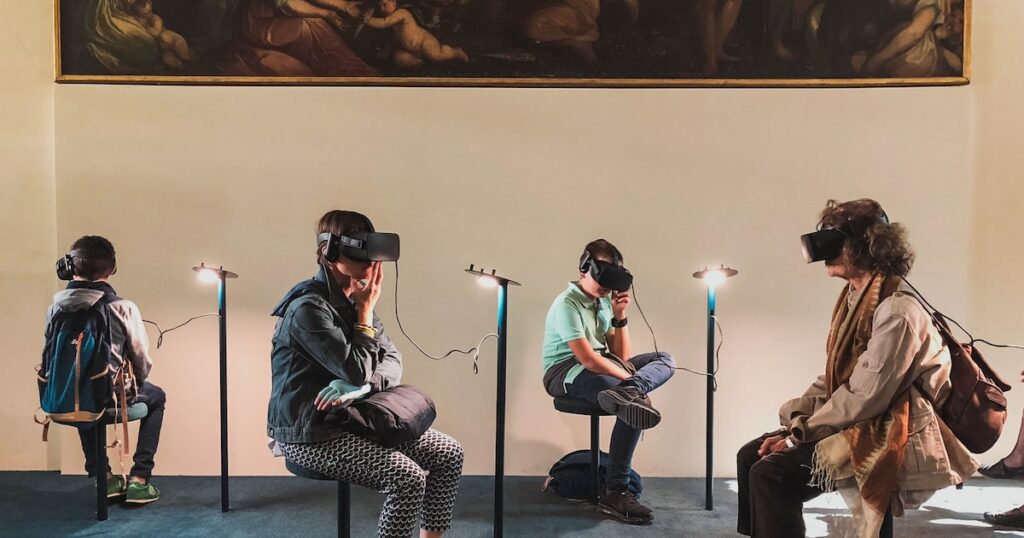Everywhere it went, the Early Church confronted heresy. As the Good News of Jesus spread throughout the Roman Empire, false accounts of Jesus arose. Docetism was one of these early heresies. Docetism claimed that Jesus was not really human. Rather, it suggested that Jesus only appeared to be human. The Gospel of Peter, a non-canonical text condemned by the Early Church, described the crucifixion of Jesus as a sort of virtual experience: He felt no pain. He did not die. He left the tomb empty after having “gone away” without anyone seeing or touching His resurrected body.
This non-canonical account, composed after the canonical Gospels, does not square with Scripture. The Gospels make it clear: Jesus is fully human. Jesus felt pain and died on the cross. Jesus was placed in the tomb and, after three days, was raised from death to life. This is all true reality, not a phantasm or hologram.
Confirming the reality of the resurrection, the Gospels frequently refer to the feet of Jesus in His post-resurrection appearances. Jesus appeared to the women at the tomb, “and they came up and took hold of his feet and worshiped him” (Matt. 28:9). Jesus visited the disciples and said, “‘See my hands and my feet, that it is I myself. Touch me, and see. For a spirit does not have flesh and bones as you see that I have.’And when he had said this, he showed them his hands and his feet” (Luke 24:39–40).
Ghosts don’t have feet. Holograms, avatars and virtual representations do not have muscle, bone and sinew. But Jesus does.
Virtual Reality: Here, There and Anywhere
Virtual reality (VR) technology, which allows people to simulate multisensory experiences, has moved from futuristic gadgetry to widely available consumer product. In the 1970s, VR was proprietary technology used only by NASA, the military and university research. Today, Google Cardboard can turn a smartphone into a rudimentary VR experience for under $10.
The Gospels make it clear: Jesus is fully human. Jesus felt pain and died on the cross.
Virtual access, however, is nothing new. The concept undergirding VR is ancient. The word “virtual” took on its modern meaning in the late 1950s. Before virtual was associated with simulation through digital technology, the word referred to an object’s essential qualities or virtues.
In this sense, the virtual has always existed. For example, people read Martin Luther virtually; although Luther is not actually present in the Small Catechism,readers can virtually access his thoughts through the text. Consider the artwork of Lucas Cranach: His paintings of Jesus’ crucifixion simulate the real occurrence. While it’s not the real thing, an essence of the real thing comes through in this virtual representation.
Modern VR takes this ancient concept to an entirely new extreme. This is not the plastic View-Master toy from childhood. VR headsets such as Oculus Quest or Valve Index provide multisensory experiences: high-resolution screens, surround sound audio and wearable haptic sensors. Engaging the eyes, ears, hands and whole body makes the experience extremely realistic.
It feels like you are really there.
But you’re not there. You’re here. You may think that you are walking a rocky edge of the Grand Canyon, but you are actually in your apartment in Cleveland. You may think you are driving 90 mph on the autobahn, but you’re standing stationary at an office building. You may feel like you are scaling Mount Everest, but you’re actually lounging on a couch in your parent’s basement.
What’s the Point?
So, is VR just a game? Is it nothing more than pointless play? And, if it’s just fun and games, does that mean it does not matter?
Not quite. There is a deeply human side to VR technology. Although VR relies on technological components, there is a human head in the VR headset. Human fingers move the controllers. A human voice speaks into the microphone. VR is not just about plastic and metal headsets. This emerging technology transforms real human heads, brains and hearts.
This is a powerful medium for presenting information and undergoing virtual experiences. Research has shown that VR technology activates the brain in ways that resemble real experiences; the brain struggles to distinguish between a person really whitewater rafting down the Colorado River or just simulating it on VR.
As such, people use VR in vastly different ways. Medical students can practice surgical operations, online learning can be multisensory when classmates and instructors gather in virtual classrooms, and language learning becomes immersive as students virtually enter a foreign country. Cognitive and behavioral therapies have used VR to help people undergo exposure therapy. For example, people have used VR to mitigate a fear of heights by virtually climbing ladders and crossing bridges.
The VR experience is so crisp and so clear that it is hard to see a downside. And yet, there is.
Jaron Lanie, in his book Dawn of the New Everything: Encounters with Reality and Virtual Reality, writes, “Never has a medium been so potent for beauty and so vulnerable to creepiness. Virtual reality will test us. It will amplify our character more than other media ever have.”
Where Things Get Blurry: Illusion and Intimacy
VR blurs the distinction between real life and virtual life, real bodies and digital bodies. Scientists have used an experiment known as the rubber hand illusion to demonstrate how the human brain can be tricked into thinking that something fake is real. The brain feels sensations from a rubber hand.
If something feels real, does that mean it is real? If it happens in VR, does that mean it really happened? VR has raised these questions, and people are answering them in some peculiar ways. For some people, the VR world is the real world.
Contrary to Docetism, Jesus had a real body — not a virtual body — with muscle and bones, hands and feet.
For example, some people have tried performing virtual Baptisms using VR technology. In a VR Baptism, the participants wear VR headsets in their respective locations and meet in an online baptistry by way of avatars. When the time comes for the (virtual) Baptism, the pastor instructs the person to be baptized (wearing a VR headset) to squat down so that the avatar goes under the digital water while the pastor says, “[Name], I baptize you in the name of the Father, and of the Son, and of the Holy Spirit.”
The absence of real water, among many other things, makes these virtual Baptisms problematic. Even though they might feel real, they are not real in a sacramental sense. Using digital water to baptize VR avatars is merely the illusion of Baptism.
Illusion, however, is not the only issue that comes up with VR. Intimacy is another issue. According to Jacques Ellul, a French philosopher and technology scholar, technology and intimacy are polar opposites. Technology hinders intimacy as we engage in solo activities, such as scrolling through our newsfeed, listening to music privately with earbuds and putting a VR headset on your head.
Ellul argues that, as technology destroys intimacy, we try to use technology in order to foster greater intimacy. We text people to stay in touch. We endlessly look at faces on Facebook. We long for VR technology that can let us feel like we are sitting next to another person.
All the while, we miss the world that is fully touchable, viewable and interactive. Unmediated by screens and headsets, the real world is imminent and intimate in a way that VR can never be. We can overlook the wonder of the real world because it is all around us and so overwhelmingly ordinary. Curiously, this technology that promises to expand our imaginations might actually be stunting it.
Washing Dirty, Calloused Feet
Contrary to Docetism, Jesus had a real body — not a virtual body — with muscle and bones, hands and feet.
Contrary to virtual reality, Jesus really was there with His disciples when He washed their feet: “[Jesus] rose from supper. He laid aside his outer garments, and taking a towel, tied it around his waist. Then he poured water into a basin and began to wash the disciples’ feet and to wipe them with the towel that was wrapped around him” (John 13:4–5).
This moment would have been wholly different had it happened virtually. It would have been the illusion of loving service. It would have seemed intimate, without being intimate.
Thankfully, Jesus chose to really wash the dirty, calloused feet of His disciples. And, thankfully, Jesus loves us with the same real and intimate love.
In order for us to have real and intimate human interactions, we will have to take the headsets off. We will have to put the phones on airplane mode and tell Alexa to stop listening. Then, and only then, can we fully engage in life together as brothers and sisters in Christ.





